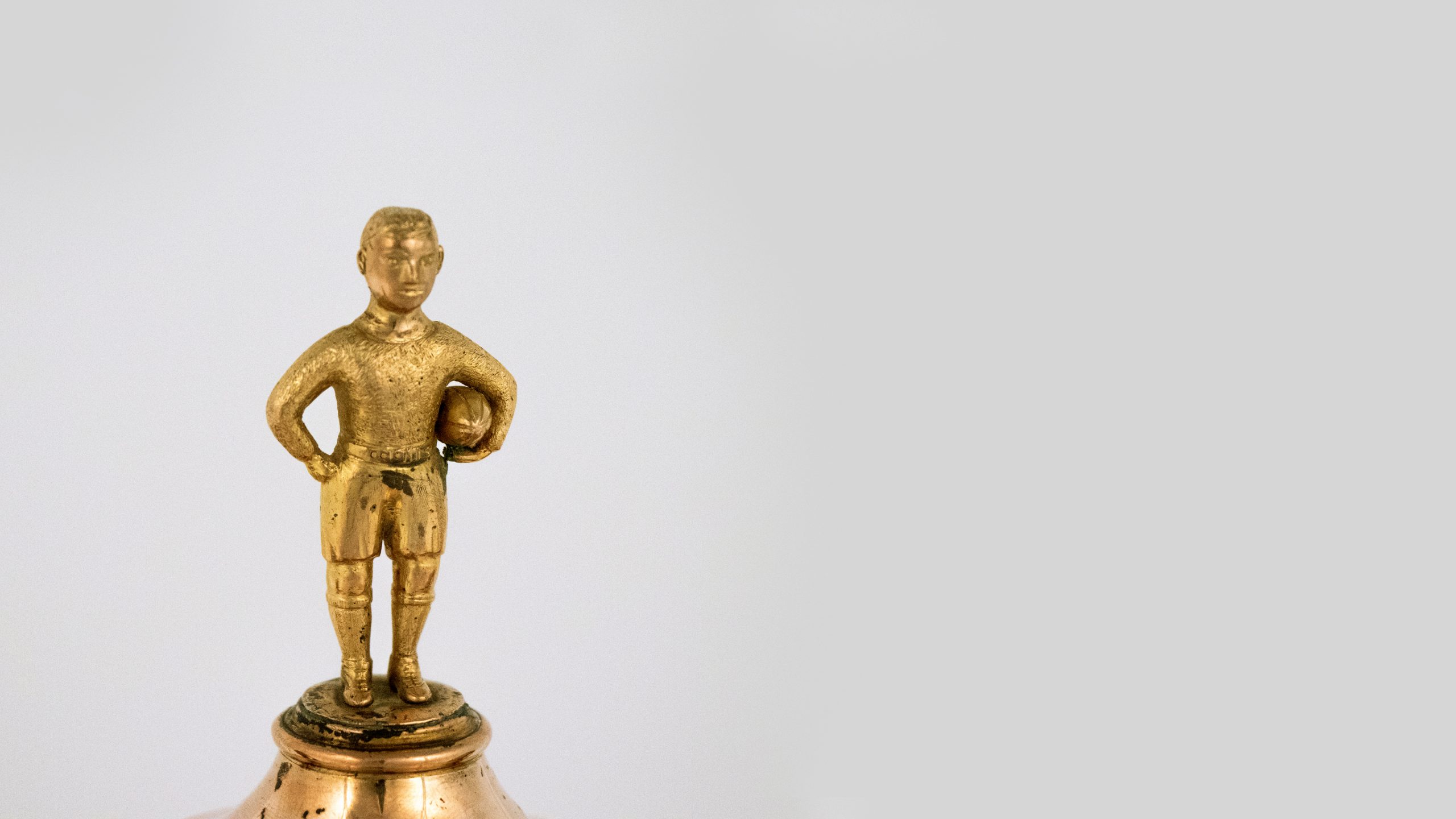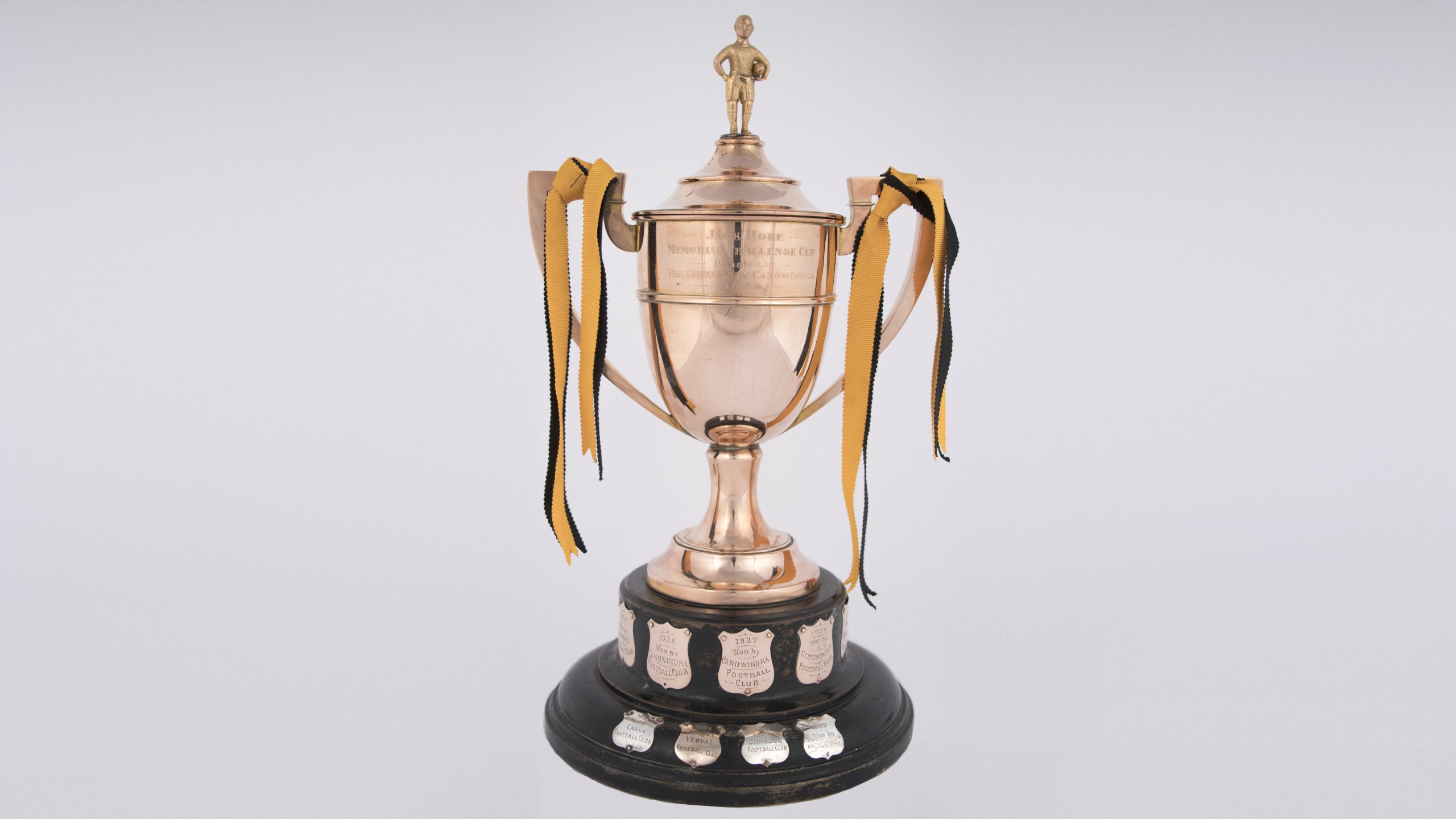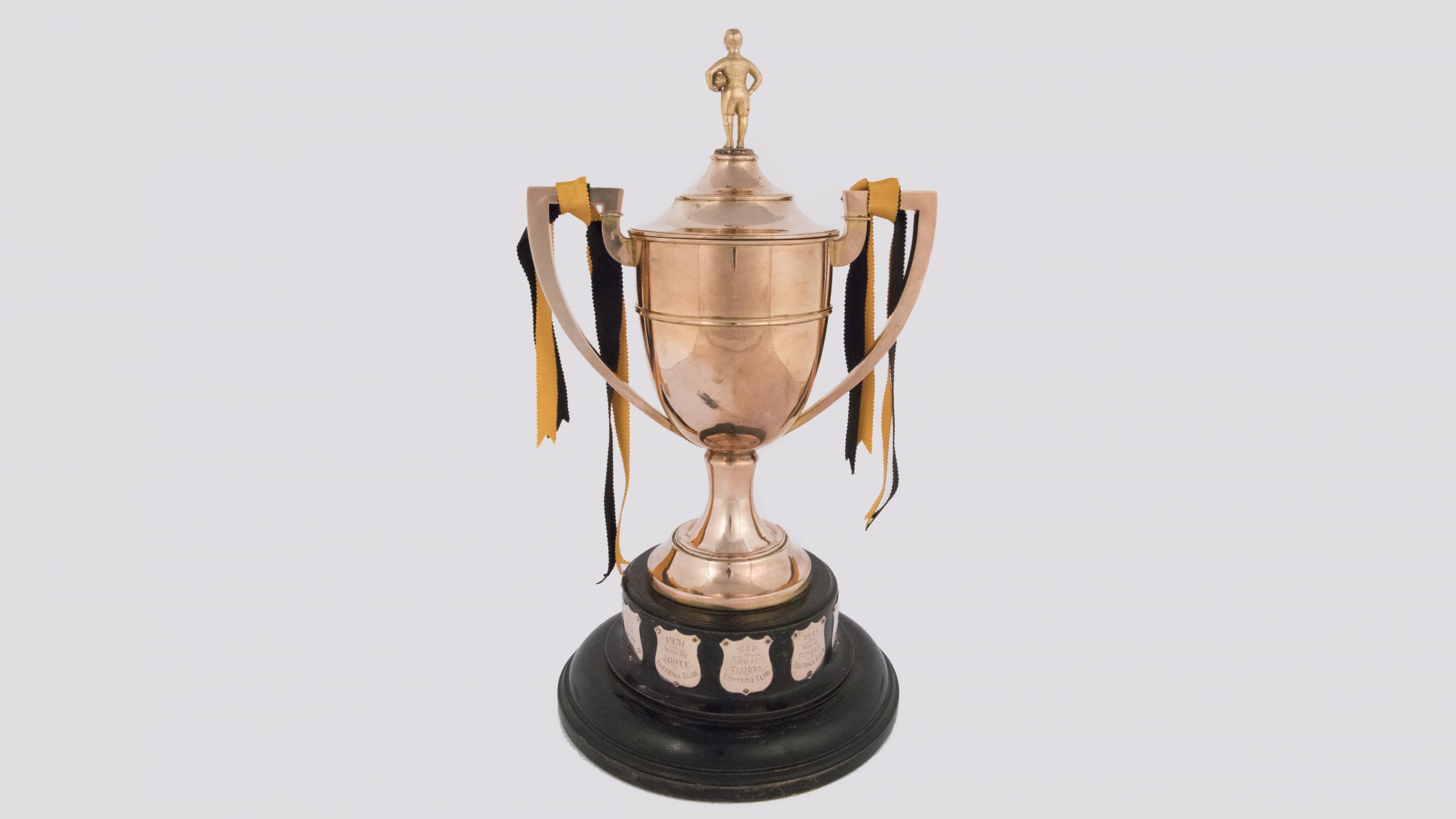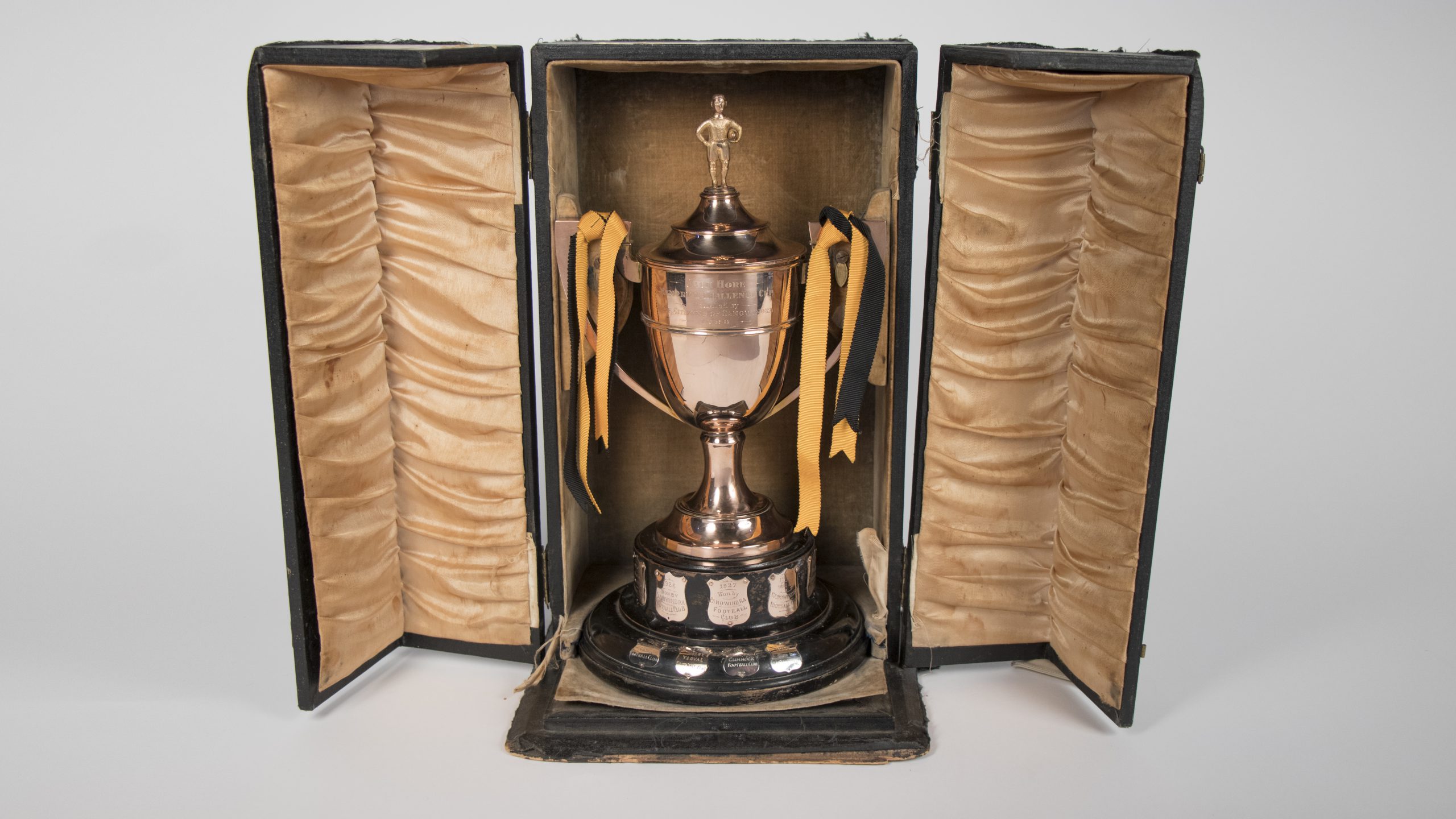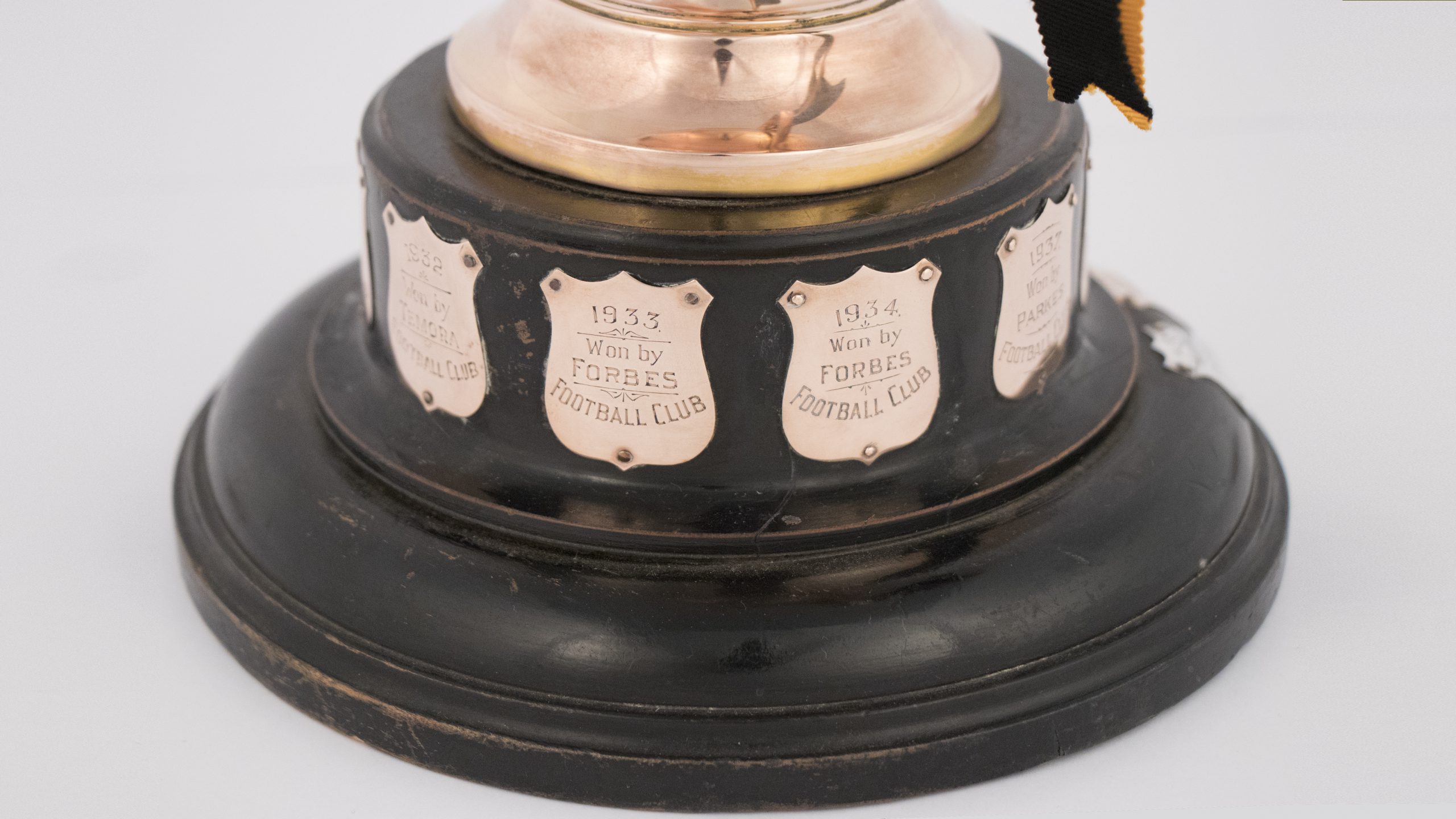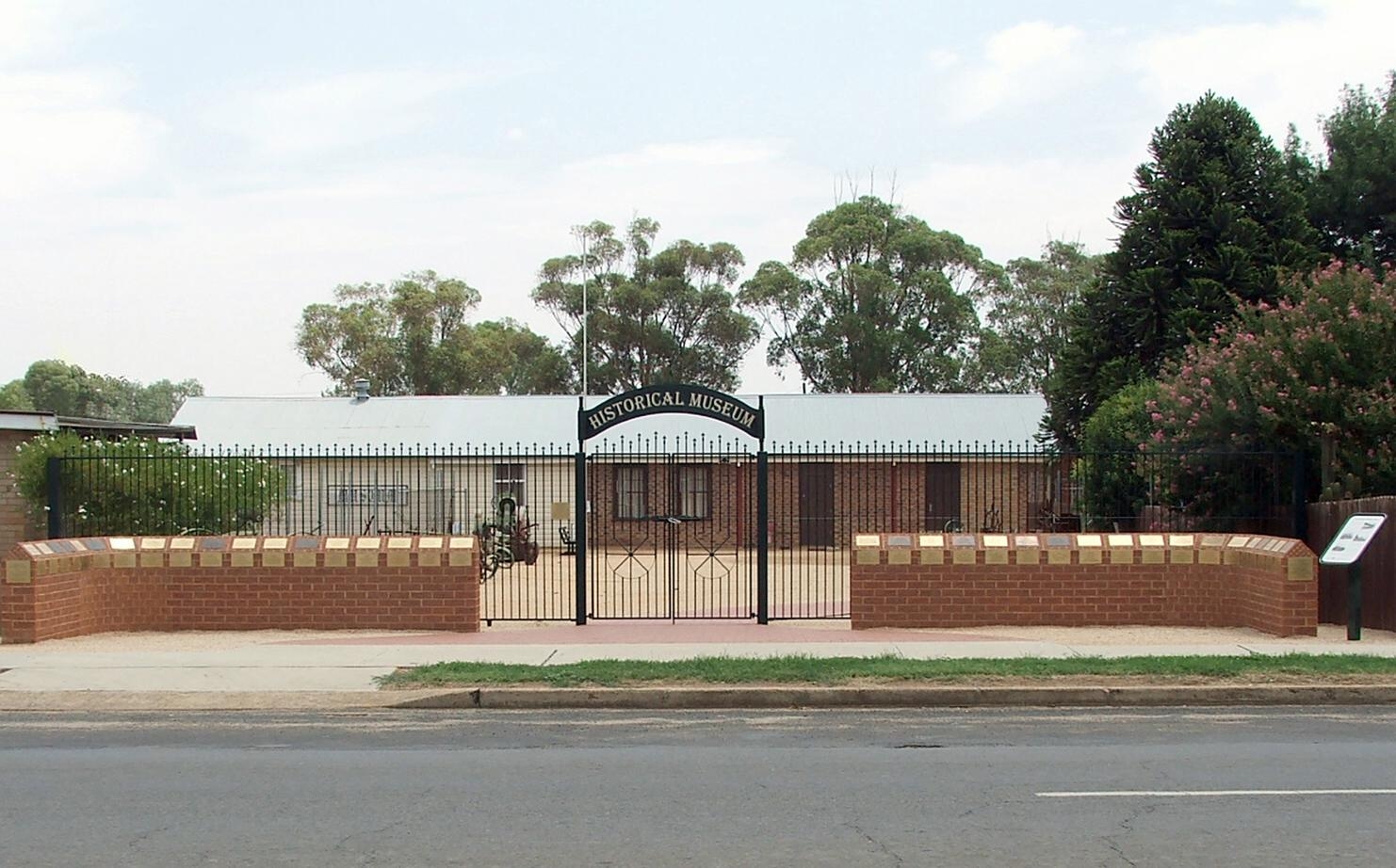In Honour of Jack
Canowindra's Rising Star
From 1926-1960 the Jack Hore Memorial Gold Cup rugby league competition was held in the state’s Central West. Clubs within sixty-five miles of the Canowindra Post Office were eligible to compete. The death of Canowindra’s young star-sportsman Jack Hore (1900-1926), at twenty six from meningitis, triggered the competition and the making of the cup.
The competition at Canowindra established almost two decades after the sport was made a professional game in Australia, with NSW being its stronghold territory.Like it had in the city, the interest in rugby league spread to many regional centres across NSW in the early twentieth century. As a sport to play or watch, rugby league gained followers in response to the increased leisure-time many Australians began to enjoy as a result of the unionisation of work. Sport was viewed as a productive use of leisure-time.
In both city and regional centres also, rugby league attracted a strong working class following, and Jack was from among this rank. He was born at Cowra in 1900 and moved to Canowindra at age fourteen, after the death of his mother. Jack worked as a jackaroo on a local pastoral property, where he also lived.
At twenty-five Jack was one of the most-popular sportsmen in the district. His talents extended to both rugby league and cricket, and he captained the Canowindra rugby league team. His early death shook his community, who publicly grieved the passing of its talented member.
Made of nine carat gold, the trophy is topped with a lone and stocky footballer, clutching a rugby league ball. To buy the cup the local community raised funds. The town’s jeweler, Mr Bergman, is believed to have mounted the figure of Jack on the top of, and engrave, the cup. When done, the cup was displayed in Mr Bergman’s shop window for everyone to view.
The following month the competition’s rules were published in the Canowindra Star and the first match was played between Canowindra and Young, at Canowindra. A souvenir programme illustrated with photographs of the cup, and Jack, was sold in large quantities on the day.


